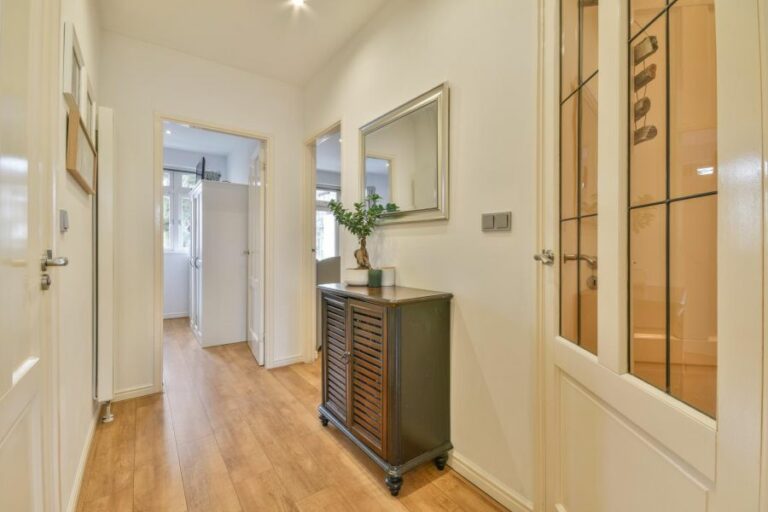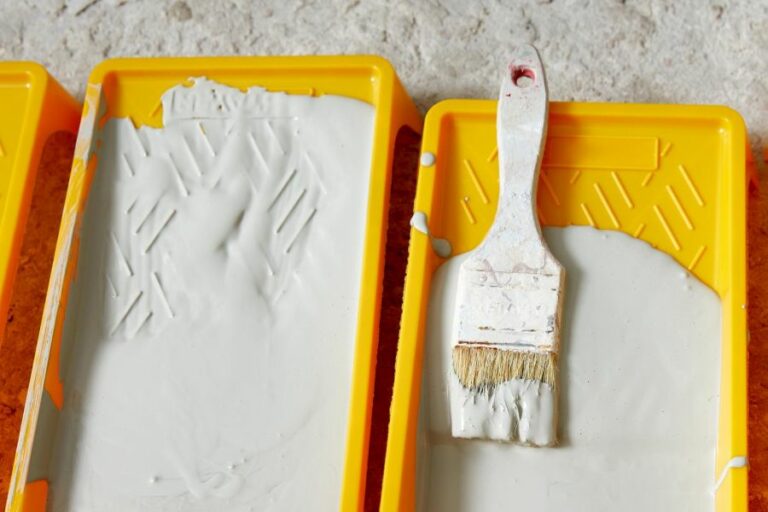Best Indoor Painting Primer, 25 Things You Should Know
Are you ready to transform your indoor living space but feel overwhelmed by the countless painting primer options on the market? We’re here to guide you through choosing the best indoor painting primer to suit your unique needs. By the end of this article, you’ll be armed with the knowledge you need to confidently select the perfect primer, ensuring your next painting project goes off without a hitch!
Best indoor painting primer:
The best indoor painting primer depends on the surface and needs of your project. For drywall, consider Behr’s Interior Drywall Primer & Sealer; for wood, use KILZ Original Interior Oil-Based Primer; for glossy surfaces, try Zinsser’s Bulls-Eye 1-2-3 Water-Based Interior Primer; and for stains and odors, use Zinsser’s B-I-N Shellac-Based Primer.

Get ready for a flawless paint job! Discover the best indoor painting primers that will change your DIY game. Learn the importance of priming, the top brands to consider, and expert tips. Keep reading to achieve the perfect finish for your desired refresh or new color. Don’t wait. Transform your space now!
Contents
- 1 Top Indoor Painting Primers for the Best Results
- 2 Interior Wall Primer: Choosing the Ideal Option
- 3 Best House Paint Primer: A Comprehensive Guide
- 4 Primer for Indoor Painting: Is it Essential?
- 5 Selecting the Perfect Kilz Primer for Interior Walls
Top Indoor Painting Primers for the Best Results
Painting your home’s interior can be exciting and rewarding, but it’s essential to begin with the proper foundation. Using the best indoor painting primer can save you time, effort, and money down the road and ensure the longevity and durability of your paint job.
• Understanding the Importance of Primer
Primer serves as the crucial first step in your painting process. It’s designed to provide a smooth, even surface for your paint to adhere to while addressing any underlying issues — such as stains, odors, or different paint sheens.
In some cases, it can even improve paint coverage and reduce the number of coats needed for a flawless finish.
Several benefits of using primer include:
- Sealing porous surfaces: Porous materials, like drywall or wood, can absorb paint unevenly, leading to an inconsistent finish. Using a primer will help even out these surfaces and prevent paint from soaking in and appearing blotchy.
- Hiding stains and odors: A high-quality primer can block stains, like water damage or smoke, and prevent odors from permeating your new paint job.
- Improving adhesion and durability: Applying a primer helps new paint adhere well to the surface, increasing its overall life span and reducing the chances of chipping or peeling.
- Enhancing paint color: Priming your walls before painting can help your chosen paint color appear more vibrant and consistent.
- Easier and flawless paint application: A well-primed surface allows for smoother paint application, ultimately resulting in a professional-looking finish.
• Identifying Your Surface and Specific Needs
Before choosing the ideal primer for your project, it’s essential to evaluate the type of surface you’re working on and any unique needs your space may have.
- Drywall: For new drywall, look for a primer specially formulated to seal and bond. It will ensure an even, consistent finish and prevent your porous drywall from absorbing too much paint.
- Wood: Wood surfaces require a primer to avoid any knots or stains from bleeding through the paint. A wood primer will also provide proper adhesion and prevent paint from soaking in unevenly.
- Glossy surfaces: Pre-priming glossy surfaces, like doors, trim, or previously painted walls, ensures better adhesion and prevents flaking or peeling. A bonding primer is designed for these surfaces; it helps dull the sheen and provides a suitable surface for your new paint to stick.
- Stains and odors: If your space has stains or odors, consider investing in a stain-blocking primer. Besides sealing and hiding imperfections, this type of primer can permanently block odors from smoke, water damage, or mildew.
• Types of Primer: Water-Based, Oil-Based, and Shellac
There are three main types of primer, each with its unique benefits and drawbacks:
- Water-Based Primer (Latex Primer): Water-based primer is the most versatile and widely used primer. Ideal for interior use on drywall and wood, it’s easy to clean up and low in odor. However, it doesn’t have as strong stain-blocking abilities as oil-based or shellac primers.
- Oil-Based Primer: Known for its exceptional durability and strong adhesion, oil-based primer is perfect for tough-to-paint surfaces like metal or plastic. It also excels at blocking odors and stains due to its high-opacity formula. However, it can be challenging to clean up, has a longer drying time, and may emit strong odors during application.
- Shellac Primer: Shellac-based primer is renowned for its stain-blocking abilities. A top contender for sealing out water, ink, or nicotine stains, as well as hiding odor caused by mold or mildew, shellac primer is quick-drying and creates a solid seal. However, you may find it harder to clean up, and it usually requires a specialized remover.
• Personal Recommendations for the Best Indoor Painting Primer
Based on personal experience and extensive research, here are a few recommendations for the best indoor painting primer:
- Drywall: I recommend Behr’s Interior Drywall Primer & Sealer for new drywall. This primer is water-based and specifically formulated for sealing and bonding drywall surfaces, providing a smooth and even foundation for your paint.
- Wood: KILZ Original Interior Oil-Based Primer is an excellent choice for wood surfaces. It excels at sealing porous surfaces and preventing bleed-through, ensuring a top-quality paint job.
- Glossy surfaces: For slick, glossy surfaces, I suggest using Zinsser’s Bulls-Eye 1–2-3 Water-Based Interior Primer. This bonding primer is easy to apply, quick-drying, and helps your new paint adhere effectively.
- Stains and odors: For the best stain-blocking and odor-sealing primer, look no further than Zinsser’s B-I-N Shellac-Based Primer. This powerful primer tackles and blocks even the most persistent stains and odors.
• Conclusion: Invest Time in Choosing Your Primer
Choosing the best indoor painting primer can make all the difference in the quality and longevity of your paint job. With a well-primed surface, your paint will adhere better, appear more vibrant, and last longer before requiring touch-ups or repainting.
By identifying your surface and specific needs, selecting the appropriate primer type, and carefully considering your options, you can ensure a professional and lasting finish for your space.
Interior Wall Primer: Choosing the Ideal Option
• Assessing Your Wall Surface
To choose the ideal primer for your interior walls, it’s crucial to identify the characteristics of your wall surface. Common wall materials include:
- Drywall
- Plaster
- Brick
- Cement board
- Plywood or paneling
Each material has unique properties, meaning different primers will have varying effectiveness. For instance, drywall and plaster surfaces usually require primers with strong adhesion and penetration abilities. In contrast, brick and block surfaces often need primers with higher alkaline resistance levels.
• Types of Primers
– Oil-Based Primers
Oil-based primers have been the leading option for many years, thanks to their sealing and adhesion capabilities. These primers are highly effective on surfaces such as stained or unpainted wood, providing an excellent base for your topcoat.
They also work well on drywall, plaster, and brick, offering a durable seal over imperfections and stains. However, oil-based primers emit volatile organic compounds (VOCs), posing health hazards and contributing to poor indoor air quality.
– Water-Based Primers (Latex Primers)
Water-based primers are an eco-friendly alternative to oil-based ones. They emit less VOCs, have faster drying times, and can be cleaned up with water. The latex primer is highly effective on drywall and plaster surfaces or when painting over low-gloss or flat paints.
However, they might not be the best option for surfaces exposed to moisture due to their limited adhesion abilities.
– Shellac Primers
Shellac primers are an ideal choice for woodworking projects. They offer quick drying times and exceptional stain-blocking capabilities. These primers seal knots and sap streaks in surfaces efficiently. Moreover, shellac primers are highly effective on smoke-damaged or nicotine-affected surfaces.
However, they’re not recommended for high-moisture areas due to their water-vulnerable nature.
• Primer Selection Recommendations
– Drywall Surfaces
For unpainted, new drywall surfaces, choosing a dedicated drywall primer is highly recommended. One such primer is the Rust-Oleum Corporation’s Zinsser Drywall Primer (a water-based product), which offers an excellent base for latex or oil-based paints.
These primers ensure your wall has a consistent and uniform appearance after painting.
– Plaster Surfaces
For newly constructed (unpainted) plaster surfaces, opting for plaster-specific primers is recommended. Plaster has a high pH level which can negatively affect a primer’s adhesion. A product like Zinsser B-I-N (shellac-based) is specifically designed for sealing and reducing plaster absorbency.
– Previously Painted Drywall or Plaster Walls
Examine the existing paint on the wall: if it peels, flakes, or bonds poorly, use a bonding primer. Examples of these are KILZ Multi-Surface Bonding Primer (water-based) or Zinsser Bullseye 1-2-3 Plus (water-based).
These primers have better adhesion abilities, ensuring a strong bond between the paint and the surface.
For walls with stains or odors, use a stain-blocking primer. KILZ Restoration Interior Water-Based Primer/Sealer (an efficient water-based option) or Zinsser B-I-N- (shellac-based) work to cover and seal stains, ensuring a clean finish after painting.
– High-Moisture Areas
In kitchens, bathrooms, or other high-moisture spaces, use a mildew-resistant primer. One such option is Zinsser Perma-White Mold and Mildew-Proof Interior Paint (water-based). These primers help minimize mildew growth and protect surface paint from potential damage.
– Dark Colors
When aiming to paint a wall with a dark color, it’s helpful to use a tinted primer. This product ensures your chosen paint color appears rich even after application. Consult your paint store specialist for assistance in selecting a primer tint that complements your chosen paint color.
• Professional Tips for Successful Priming
- Ensure proper surface preparation by cleaning and repairing the surface.
- Mimic the painting process primer application should be as smooth and even as possible.
- Apply primer using a brush, roller, or sprayer based on your preference and project scope.
- Allow adequate drying time before proceeding with painting.
In conclusion, identifying the right primer for your interior walls will vary based on your wall material and project requirements.
Assess your surface and choose a primer type accordingly oil-based, water-based, or shellac-based. Then, consider specific factors such as unrevealed material, existing paint condition, moisture exposure, or color goal.
Best House Paint Primer: A Comprehensive Guide
Selecting the right primer for your house can greatly affect the durability and appearance of your paint job. With countless options available in the market, it is essential to understand the key differences between these products and their intended purposes.
• Oil-Based Primers
Oil-based primers are versatile and can be applied to different surfaces, including wood, metal, and previously painted surfaces. These primers are known for their excellent adhesion and stain-blocking properties:
– Advantages of Oil-Based Primers:
- Offers exceptional adhesion.
- Effectively blocks stains and tannin bleed from wood.
- Best for severely weathered or chalky surfaces.
– Disadvantages of Oil-Based Primers:
- Tends to yellow over time.
- Longer drying time.
- Harsher odor, requires proper ventilation when applying.
- Higher volatile organic compounds (VOCs) content.
Recommendation: I recommend using oil-based primers for exterior wood surfaces or interior woodwork, where adhesion and stain-blocking properties are more critical.
For additional information on oil-based primers, visit the EPA website.
• Latex (Water-Based) Primers
Latex primers are water-based and have gained popularity for their lower VOC content and easier clean-up. They are suitable for a variety of surfaces, particularly drywall, plaster, and masonry:
– Advantages of Latex Primers:
- Faster drying time.
- Lower odor, making it more user-friendly.
- Easier clean-up with soap and water.
- Lower VOC content compared to oil-based primers.
- Less prone to cracking and peeling over time.
– Disadvantages of Latex Primers:
- Lesser adhesion to certain surfaces, such as glossy or porous ones.
- Less effective at blocking stains compared to oil-based primers.
Recommendation: I recommend using latex primers for interior drywall, plaster, and masonry surfaces due to their ease of use and lower environmental impact.
Find more information on latex primers by visiting the EPA’s Indoor Air Quality webpage.
• Shellac Primers
Shellac primers are known for their exceptional stain-blocking capability but have relatively limited applications:
– Advantages of Shellac Primers:
- Offers unmatched stain-blocking performance.
- Seals in odors from smoke, water damage, and pet stains.
– Disadvantages of Shellac Primers:
- Limited use due to its high VOC content and harsh odor.
- Difficult to clean up.
- Brittle and less flexible.
Recommendation: I suggest using shellac primers only in extreme cases when there’s a need for superior stain-blocking or sealing of odors.
• Specialized Primers
Apart from the general primers mentioned above, there are specialized primers designed for specific applications:
- Bonding Primers: These primers are designed for surfaces with poor adhesion or surfaces that are difficult to paint, such as plastics, tiles, or glossy surfaces.
- Masonry Primers: These primers are specifically formulated for use on concrete and masonry surfaces, providing excellent adhesion and durability on these substrates.
- Rust-Inhibitive Primers: Metal surfaces susceptible to rust benefit from the application of rust-inhibitive primers to provide extra protection against corrosion.
Strictly follow the manufacturer’s recommendations when using specialized primers for best results.
• Final Thoughts on Choosing the Best Primer
Always consider your surface type, environmental factors, and the desired finish when selecting a primer for your house paint project. Each primer type has its unique qualities and limitations, so make sure to evaluate your specific needs and preferences before making a decision.
To sum it up:
- Use oil-based primers for exterior wood surfaces or interior woodwork.
- Use latex primers for interior drywall, plaster, and masonry surfaces.
- Use shellac primers only when there’s a need for extreme stain-blocking or odor-sealing.
- Consider specialized primers when dealing with specific substrates or challenging painting conditions.
By choosing the right primer, you can ensure that your paint job will not only look great but also last longer, protecting your home from the elements and providing a beautiful living space for you and your family.
Type of Primer | Description | Best Used On |
|---|---|---|
Latex Primer | Water-based primers that are easy to clean and have low odor. | Most surfaces, including wood, brick, drywall, and previously painted surfaces. |
Oil-Based Primer | Provides a strong bond, excellent adhesion, and stain-blocking properties. | Wood, metal, and surfaces with stains or existing layers of paint. |
Shellac Primer | Fast-drying and offers unbeatable stain and odor-blocking properties. | Stained surfaces, odorous surfaces, smoke damage, or surfaces with water damage. |
Bonding Primer | Designed to provide maximum adhesion on smooth, glossy, or hard-to-stick surfaces. | Tile, glass, high-gloss paint, or surfaces with a satin or glossy sheen. |
Primer for Indoor Painting: Is it Essential?
Primer is often overlooked when embarking on an indoor painting project. Many people ask themselves, “Is primer really necessary when painting indoors?”
• The Purpose of the Primer
A primer is designed to create a uniform, sound surface for the paint to adhere to. It serves to provide excellent adhesion for the topcoat, blocking stains and pigmented materials and ensuring that the color of the paint will display accurately.
Additionally, primer minimizes the number of paint coats required, potentially saving you both time and money.
In short, the main functions of primer are to:
- Enhance paint adhesion
- Block stains or pigmented materials
- Create a consistent base to ensure accurate color display
- Minimize the number of paint coats required
With these functions in mind, let’s delve into the situations that call for primer use and the types of primers available on the market.
• When to Use Primer for Indoor Painting
There are several scenarios where a primer is essential for achieving a quality end result in your indoor painting project. These include:
- New, untreated surfaces: Bare surfaces, such as drywall, plaster, or wood, will absorb paint unevenly. Applying primer creates an even, sealed surface for the paint, ensuring a smooth and uniform appearance.
- Changing from a darker to a lighter color: When painting over a dark color with a lighter one, applying a primer first will help to effectively cover the previous color, resulting in fewer coats of paint and a truer color representation.
- Covering stains or marks: Stains or marks from water, grease, nicotine, or markers can be persistent and may show through fresh paint. Primer acts as a barrier to contain the stain, preventing it from bleeding and compromising the new paint job.
- Repairing surfaces with visible differences in texture or sheen: If your walls have patchy spots due to previous repairs or varying paint finishes, primer can create a uniform surface, masking these differences and making them less noticeable after painting.
Based on my experience and expertise, I highly recommend using a primer in these situations to achieve the best possible outcome for your painting project.
• Types of Primer and Selecting the Right One for Your Project
There are several types of primer available, each with its advantages and applications. The three most common types are:
- Oil-based primer: Highly versatile, oil-based primers can be used on various surfaces, including wood and metal. They have excellent adhesion and stain-blocking properties, making them ideal for covering stains or adhering to surfaces that may retain residue or moisture.
- Latex-based primer: These water-based primers are generally more environmentally friendly and easier to clean up, as they only require water for cleanup. Latex-based primers are suitable for most surfaces, including drywall and plaster. However, they may not be the best choice for stain-blocking or adhering to surfaces with residue.
- Shellac primer: Shellac primers are excellent for blocking stains and odors, providing a strong barrier against water, grease, and nicotine stains. While they are more difficult to clean up, requiring denatured alcohol instead of water, shellac primers can be used on various surfaces, such as wood and plaster.
Consulting the U.S. Environmental Protection Agency’s (EPA) guidelines can also help you make informed decisions about environmentally friendly and low-VOC (volatile organic compound) primer options.
When choosing a primer, it’s essential to consider the surface you’re working with, the condition of the surface, and the specific needs of your project. In most cases, a reputable paint store employee can help you make an informed decision and select the right primer for your project.
• In Conclusion
Primer is an essential component in achieving professional, long-lasting results for your indoor painting projects.
Knowing when to use primer, understanding its primary functions, and selecting the right primer for your specific needs will ensure that your hard work pays off and that you can enjoy a beautiful, durable result.
Next time you find yourself questioning the necessity of primer for your indoor painting project, remember that the benefits and assurances it provides can save you time, money, and potential disappointment down the road. Happy painting!
Question | Answer |
|---|---|
Do you need primer when painting indoors? | It depends on factors such as the type of paint, the surface condition, and the color change. Using a primer can improve adhesion, hide stains, and provide a smooth, long-lasting finish. |
Selecting the Perfect Kilz Primer for Interior Walls
• Introduction
Choosing the right primer for your interior walls is essential for achieving a professional, long-lasting paint job. Among various primer brands available in the market, KILZ is a trusted name known for its high-quality products.
The brand offers a wide range of primers, and selecting the best KILZ primer for your specific needs may be a daunting task.
• KILZ Original Oil-Based Primer
KILZ Original is a versatile, oil-based primer that works great on various surfaces, including interior walls, woodwork, and previously painted surfaces. It effectively seals porous surfaces, ensuring a uniform, smooth finish.
Its exceptional adhesion and stain-blocking capabilities make it ideal for covering stubborn water stains, pet odors, smoke, and other challenging stains.
I recommend KILZ Original Oil-Based Primer for projects involving multiple surfaces or areas with heavy stains. However, it is crucial to remember that oil-based primers have high VOC levels and strong odors, requiring proper ventilation during use.
You can find more information on the safe use and disposal of oil-based products on the EPA website.
• KILZ Premium Water-Based Primer
If you are looking for a high-quality water-based primer, KILZ Premium is your best option. This primer offers excellent adhesion, ensuring a smooth, even surface for your paint. It is also known for its exceptional sealing properties on porous surfaces like drywall, wood, and stucco.
Additionally, it effectively blocks mild stains and resists mold growth.
I recommend KILZ Premium Water-Based Primer for a wide range of interior wall projects, including drywall, plaster, and paneling. With low VOC levels and easy soap-and-water cleanup, this product is environmentally friendly and safe to use.
• KILZ Restoration Primer
For heavily stained walls or surfaces that have experienced significant damage, KILZ Restoration Primer is the ideal choice. This water-based primer offers the benefits of oil-based products without high VOC levels and strong odors.
It effectively covers severe water and smoke stains, pet odors, tannin bleed, and other hard-to-block stains.
I recommend KILZ Restoration Primer for walls that need extensive restoration work, as it can save you time and effort by thoroughly covering tough stains and damage. Keep in mind that it is best to consult a professional if your project involves dealing with hazardous materials like lead-based paint or asbestos.
• KILZ 2 All Purpose Primer
A budget-friendly option, KILZ 2 All Purpose Primer, is a water-based product that delivers reliable performance at an affordable price point. It offers decent stain blocking and adhesion properties, making it suitable for light to medium staining projects.
This primer is compatible with various surfaces, including drywall, wood, and masonry.
I recommend KILZ 2 All Purpose Primer for cost-conscious projects and wall surfaces with minimal staining or patching requirements. However, note that it may not effectively cover severe stains or heavy damage.
• Choosing the Best KILZ Primer for Your Project
Each KILZ primer is designed to meet specific requirements and offers unique benefits. To decide which primer is best for your interior walls, consider factors like:
- Surface type (drywall, wood, masonry, etc.)
- Stain severity (light, medium, or heavy)
- Budget constraints
- Environmental concerns
Understanding these factors will help you determine the most suitable KILZ primer for your project.
• Final Thoughts
Selecting the best KILZ primer for your interior walls will significantly impact the final outcome of your painting project. By considering the surface type, stain severity, and your budget, you can choose the ideal primer to ensure a beautiful, long-lasting finish for your walls.
Whether you opt for KILZ Original, Premium, Restoration, or KILZ 2 All Purpose Primer, each product offers reliable quality and performance, leaving you with a professional-looking result that enhances your living space.
| Best Kilz Primers for Interior Walls |
|---|
| Kilz Original Interior Oil-Based Primer |
| Kilz 2 Interior Latex Primer |
| Kilz Premium High-Hide Stain Blocking Latex Primer |
| Kilz Max Clear Water-Based Interior Primer |
| Kilz High Build Surface Healing Primer |
| Kilz Restoration Interior Primer |







